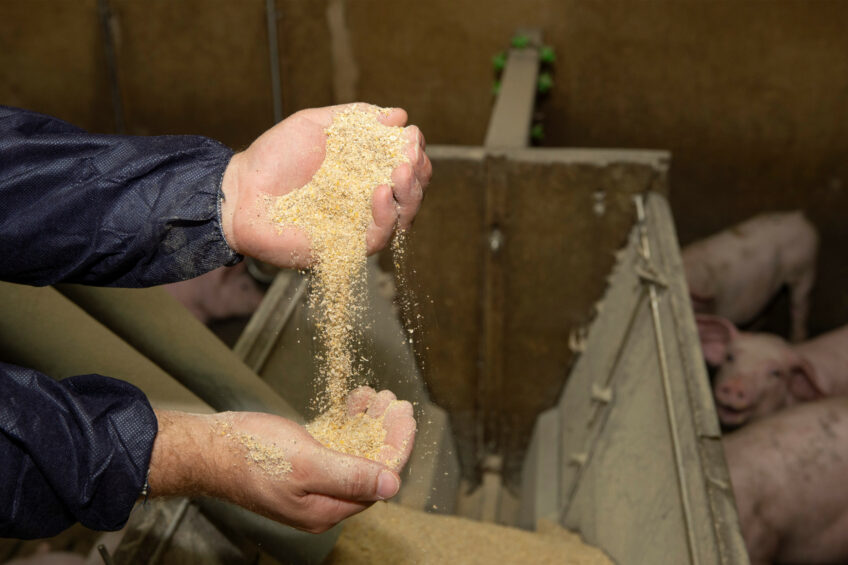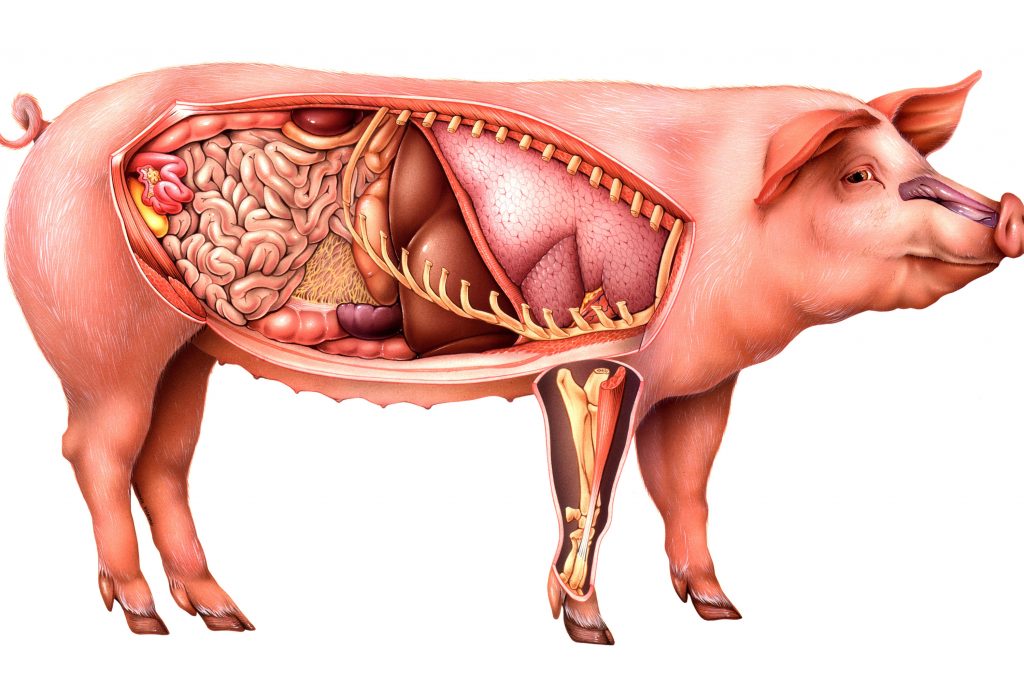Good vs. bad bacteria in pig feed

Microorganisms such as bacteria present in feed have a variety of impacts on nutrient digestion and absorption, affecting pig feed efficiency. This article discusses which bacterial species have a positive and which have a negative impact.
Species with positive impact on feed efficiency
Bacteroides
Bacteroides is a genus of gram-negative, obligate anaerobic bacteria. Some species of Bacteroides have a dual beneficial and pathogenic role based on their locations in the host. In pigs’ hind gut, Bacteriodes play a significant role in fibre degradation due to a high concentration of the carbohydrate-active enzyme genes. In addition, Bacteriodes are involved in anaerobic fermentation of complex carbohydrates in the gut and produce saturated fatty acids which improve the host’s gut health and feed efficiency.
Bifidobacterium
Bifidobacterium is a genus of gram-positive, anaerobic bacteria which produce lactic acid as their major metabolic end-product of carbohydrate fermentation. Oral administration of Bifidobacterium increases the total amount of gut mucosal immunoglobulin, thus improving gut health. In addition, Bifidobacterium improves the digestibility of dry matter, organic matter, energy, crude protein, crude fibre, and phosphorus. Studies have shown that a greater abundance of Bifidobacterium leads to improved feed efficiency.

Lactobacillus
Lactobacillus is a genus of gram-positive, aerotolerant anaerobic bacteria. Lactobacillus improves the digestibility of dietary nutrients in pigs due to the increased production and activities of lactic acid and proteolytic enzymes in the gut tract. In addition, Lactobacillus plays a major role in energy harvest from carbohydrate breakdown in hosts’ gut. Lactobacillus is associated with beneficial effects in the gut and better feed efficiency. Furthermore, studies have shown that higher abundance of Lactobacillus is associated with greater average daily gain and backfat thickness and lower residual feed intake in pigs.
Prevotella
Prevotella is a genus of gram-negative bacteria. Increase in the relative abundance of Prevotella is associated with improved gut health, average daily feed intake, average daily gain, and feed efficiency. Studies suggest that the increased growth performance in Prevotella-enriched pigs post-weaning is linked to the ability of Prevotella to ferment complex dietary polysaccharides, which ultimately increases energy harvest.
Paraprevotella
Paraprevotella is a gram-negative, anaerobic genus of bacteria. An increase in the relative abundance of Paraprevotella is associated with enhanced villus height and gene expression related to cellular development and homeostasis, immune-modulation, and protein synthesis. In addition, Paraprevotella produces enzymes that can degrade complex dietary polysaccharides, thus improving fibre digestibility and feed efficiency.
Oscillibacter
Oscillibacter is a gram-negative, anaerobic bacteria with probiotic and anti-inflammatory activities. The increase in the relative abundance of Oscillibacter in pigs’ gut is associated with lower average daily feed intake, backfat, and loin depth in pigs. In addition, Oscillibacter is more abundant in leaner, healthier, more feed-efficient pigs.
Anaerotruncus
Anaerotruncus is a gram-positive, anaerobic genus of bacteria that contains pathogenic species and is associated with heavier pigs. An increase in the relative abundance of Anaerotruncus improves feed efficiency and increases backfat thickness.
Dorea
Dorea is a Gram-positive genus of bacteria from the family Lachnospiraceae. An increase in the relative abundance of Dorea enhances average daily feed intake in pigs; however, it reduces the digestibility of energy, cellulose, or haemicellulose. In addition, an increase in the relative abundance of Dorea improves feed efficiency.
Species with a negative impact on feed efficiency
Collinsella
Collinsella is a gram-positive, anaerobe genus of bacteria which colonises the gut mucosa of pigs via the use of mucins. An increase in the relative abundance of Collinsella enhances the apparent neutral detergent fibre digestibility and the acid detergent fibre apparent digestibility. However, studies have found that an increase in the relative abundance of Collinsella reduces feed efficiency.

Clostridium perfringens
Clostridium perfringens is a genus of anaerobic, gram-positive bacteria associated with severe lethal necrotic enteritis. High relative abundance of Clostridium perfringens is associated with decreased growth performance and less backfat thickness in pigs. Clostridium perfringens damages gut villi and reduces nutrient digestibility and absorption. In addition, studies have shown that an increase in the relative abundance of Clostridium perfringens in the ileum and caecum of pigs decreases feed efficiency.
Escherichia coli
E. coli is a gram-negative, facultative anaerobic bacterium from the genus Escherichia. E. Coli is the major cause of post-weaning diarrhoea, leading to decreased growth rate, lower nutrient digestion and absorption, reduced feed efficiency, and increased mortality and morbidity in piglets. Research has shown that supplementation of the basal diet with antibiotics against E. Coli improves feed efficiency of pigs by reducing the frequency of diarrhoea and increasing jejunal villus height.
Shigella
Shigella is a gram-negative, facultatively anaerobic genus of bacteria which is genetically related to Escherichia. Shigella is a pathogenic bacterium and an increase in the relative abundance of this genus is detected in diarrhoeal pigs. The presence of Shigella has a negative correlation with average daily gain, carcass weight and the feed efficiency of pigs.
Burkholderia
Burkholderia is a gram-negative, obligately aerobic genus of bacteria. The relative abundance of Burkholderia is positively correlated with Lactobacillus population in the gut. However, Burkholderia is more abundant in pigs with higher residual feed intake which are less feed efficient.
Actinobacteria
Actinobacteria is a gram-positive genus of bacteria which is the second most dominant bacterial phyla in the guts of wild pigs. The presence of Actinobacteria in swine feed reduces feed efficiency.











